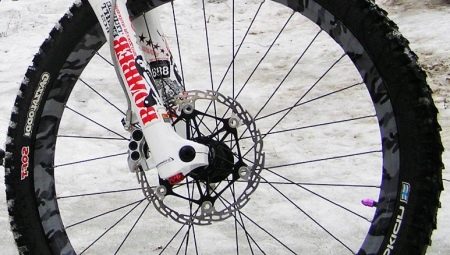Any transport must have one or another kind of brakes. The bike is no exception. Quite often, bicycle use disc brakes, which allow you to quickly stop the bike and not create unnecessary load.
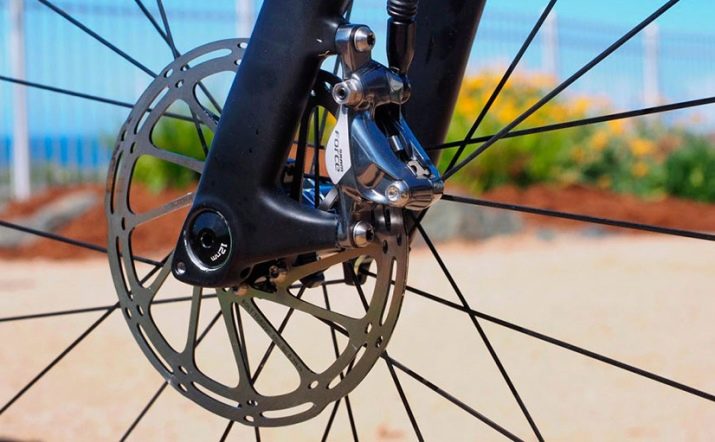
Features
There are many varieties of braking devices. Their disk version is excellent in conditions when it is necessary to provide increased cross-country ability. It allows the cyclist to compete confidently with motorcyclists and owners of SUVs.
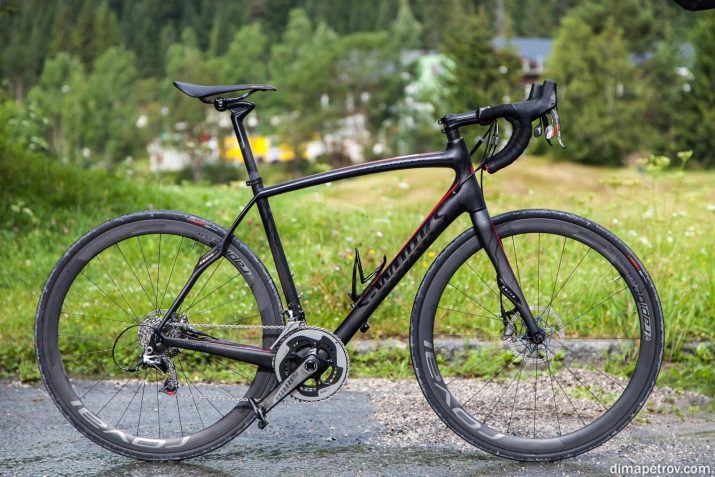
A device typically includes:
- control stick;
- rotor disk responsible for stopping;
- mounting bracket (sometimes it is replaced with an adapter);
- a caliper mounted using a bracket or an adapter (a crucial part);
- abrasive pads (stopping the rotor if necessary);
- brake lines that allow you to transfer force from the handle to the actuators.
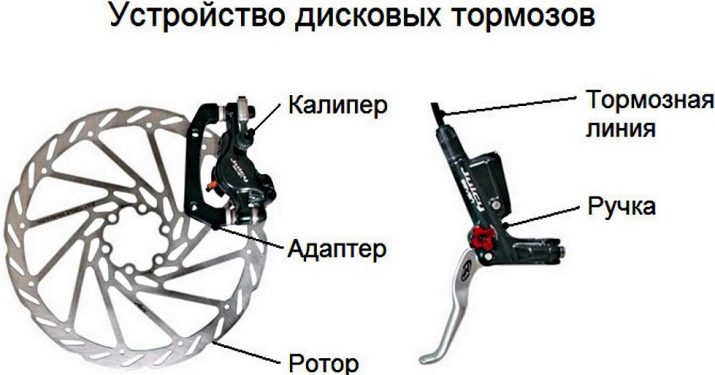
Different types of disc brakes differ in design features and operational parameters. The larger the diameter of the rotor, the more efficient the operation of the unit. But this does not mean that a very large rotor is always better. It can be used only with sufficiently strong wheel spokes. Sometimes these needles even have to be replaced.

Before finding out the details of the design of disc structures and selecting a set of rear and front brakes, you need to compare them with rim counterparts.
A “disc” is distinguished by far better modulation than a “rim”. He, undoubtedly, is ahead of the following types in this parameter:
- tick-borne;
- cantilever brake;
- The most selected V-Brake.

And what's interesting even increasing the thickness of the pads hardly helps smooth out this difference. But the specifics at this point are not limited. Any rim clogs more than a rotor. And it is worth getting on the contacting surface of the liquid or abrasive substance (especially sand), as the system immediately gets frustrated. Little of, the disk version works fine even when the bike "writes out eights."
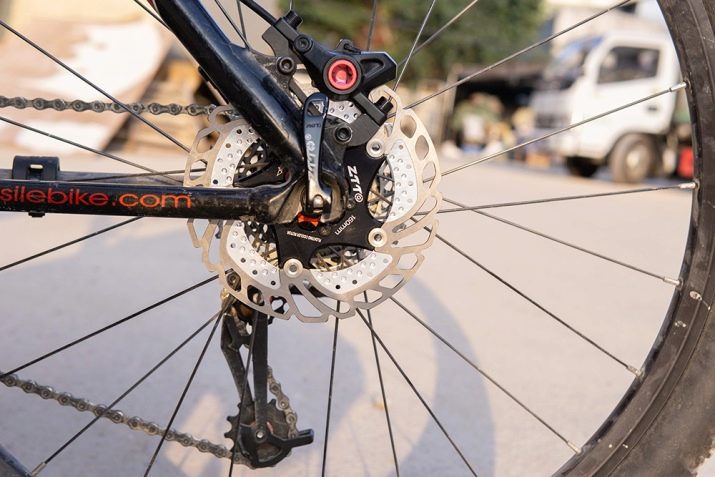
A disk-based system contains only 2 parts that are subject to intense wear - these are pads and rotor.
V-Brake has another weak spot - aluminum rims. And after some time they will inevitably break down - no matter how carefully the cyclists ride, whatever driving style they choose.
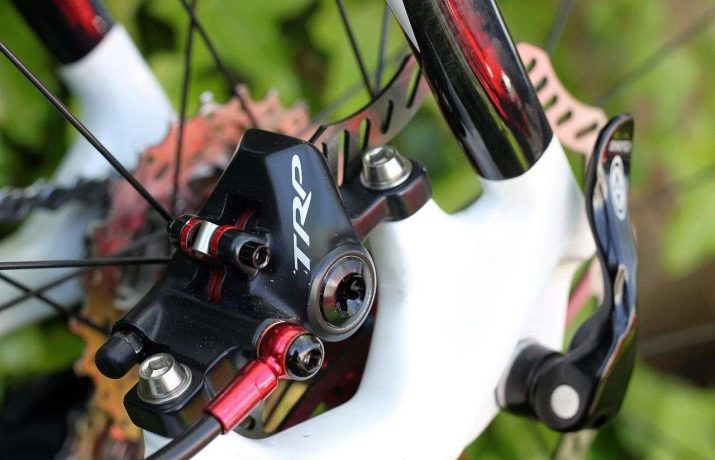
But all this does not mean that disc brakes are completely free from flaws. Having chosen them, you need to be prepared for the following nuances:
- very powerful bending effect on the knitting needles;
- increased mass of the structure;
- difficulties with repair;
- difficulties with installing the trunk (except for the console version) when using the rear disc brake;
- high enough price;
- focus mainly on off-road and mountain difficult roads, and not on urban asphalt.
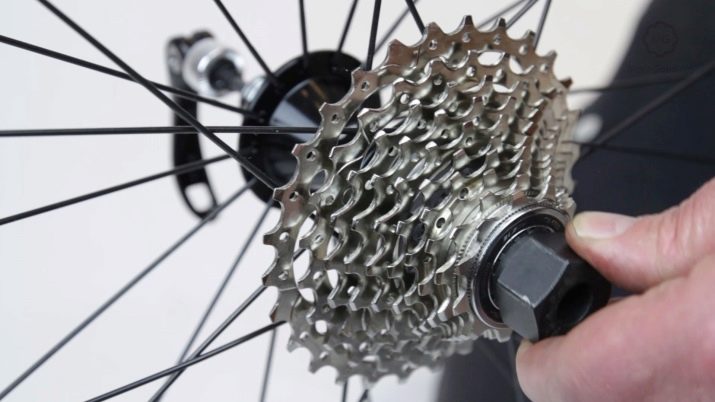
Mechanical and hydraulic options
The mechanical type of bicycle brake parts is equipped with a cable-type drive. It turns out a relatively simple and particularly reliable solution. The principle of operation is amazingly simple:
- the cyclist presses a special handle;
- movable block is triggered;
- she presses a disk to a motionless block.
It is worth clarifying that some designs have 2 moving blocks at once.
However, such a technical solution is very rare. Mechanical disc brakes will have to be constantly tuned. More precisely, adjustment of the gap separating the pads from the rotor will be required. Otherwise, the brake handle will fail all the time, and instead of pressing the disk against the worn block, it will be pressed against the caliper.
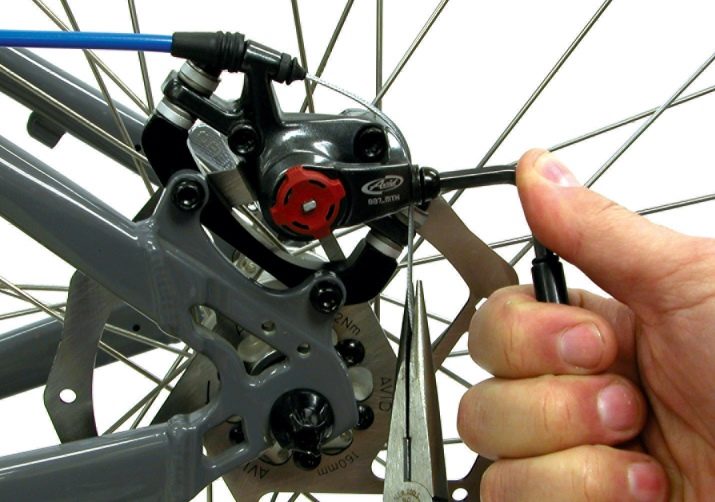
In such a situation, a malfunction of the system is inevitable. In addition, it significantly loses power. But the adjustment of the gap does not constitute any problems. If it is made correctly, guaranteed rapid wear is excluded.
Recommendation: in wet, slushy weather, it is better to move mechanical pads away - this will increase the resource.
Selecting mechanical disc brakes is not as easy as it sounds. Their main minus is high price. More precisely, you can buy a cheap option, but there is a great risk of coming with him not at all where you need to. The most worthy proposals, according to professionals, are put forward by the company Avid "Mechanics" from Shimano or Tektro not inferior in quality, but allows you to save a little.
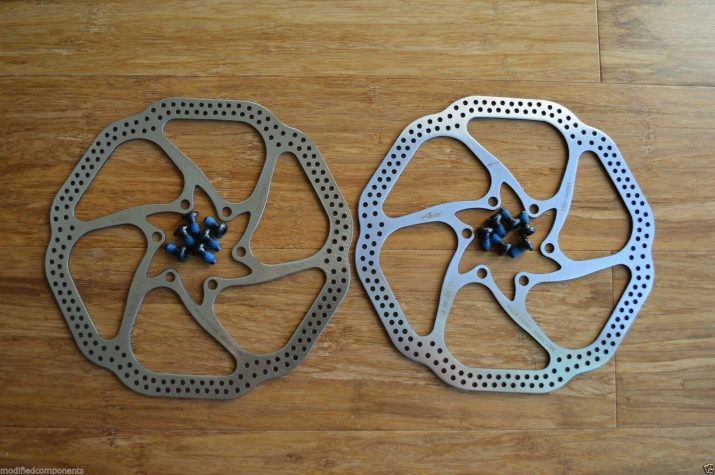
Important: high-quality braking systems will show their best only in conjunction with solid control handles.
For this reason, they only become more expensive. If you want to further reduce costs, it is better to put hydraulic brakes in a suitable price range. But the mechanical type has an advantage in another - It is great for overcoming off-road and poorly equipped sections of roads.
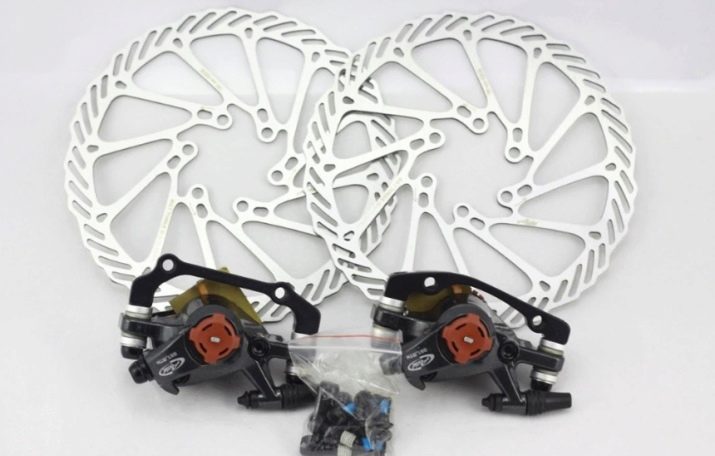
This circumstance will be appreciated, of course, by both tourists and rural residents. And even those who like to travel to the forest, to fishing, to the suburbs. "Mechanics" is simply more reliable - including when it falls or collides with an obstacle. And if it breaks, then there should not be any problems with the repair. Unfortunately, these advantages are pretty obscured by the increased severity of purely mechanical brake systems and their poor modulation.

While mechanical brakes transmit impulses from the handle to the brake unit through a cable, hydraulic ones use a hydraulic system filled with specially selected fluid for this purpose. Regardless of how they are arranged, the size can be very different:
- 140 mm;
- 160 mm;
- 180 mm;
- 220 mm.
It is believed that disks larger than 180 mm are not needed for a trip through the forest. Freeride fans are advised to focus on the size of 180 or 185 mm. Downhill mode (downhill from the mountain) is more demanding on braking. Here you will already need discs of 200, 210 or even 220 mm. The same can be said about bikes for extreme track rides.
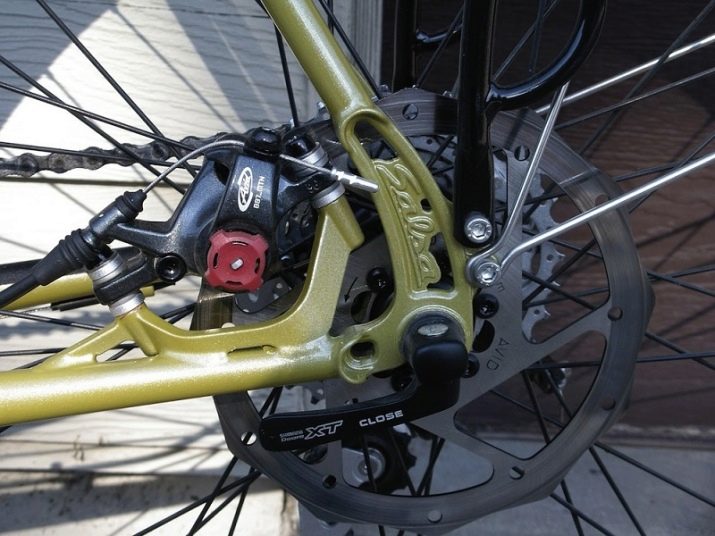
Pads can be arranged in various ways. In some cases, they are made from organic substances, in others they are metallized. The metallized look involves joining steel filings with carbon. It turns out:
- mechanically hard;
- long serving;
- excellent contact type even with wet discs.
However, it is impossible to consider them the best for any situations. The fact is that during operation the metallized product will become very hot. The caliper will also overheat. For the hydraulic system, elevated temperatures are undeniably harmful. With a mechanical system, everything is not so clear, but it is unlikely that warming up will be useful for it.
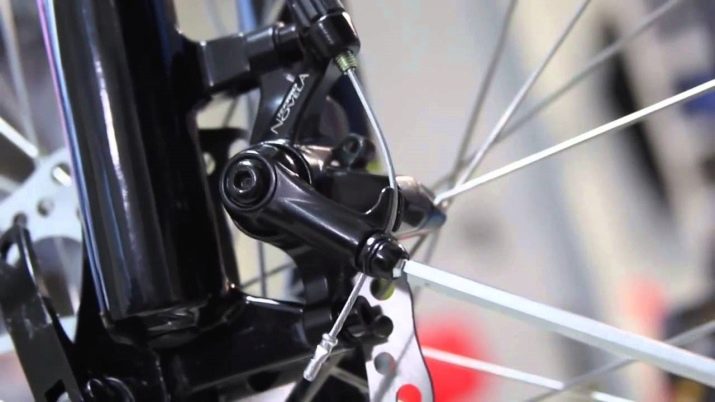
Organic pads will certainly heat up too. These are the laws of physics. But the combination of rubber with cellulose is characterized by very low thermal conductivity.
Because of this, the discs themselves will heat up during braking. No creaks will be heard, and grinding is quick; however, organic pads will quickly wear out. Calipers are needed for the same purpose as calipers on motorcycles and cars. They have only slightly smaller sizes. The hydraulic caliper includes a metal housing obtained by casting, a piston, and a hydraulic block. The fluid flow moves the piston. And already he moves a block and provides capture of a disk.
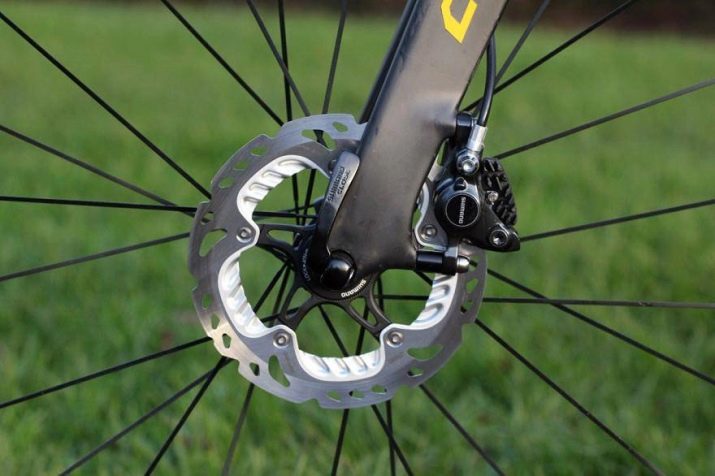
The mechanical caliper is arranged in a different way. This is a cam mechanism. Outside, a lever is placed on which a cable is mounted. The received impulse can be transmitted to the piston using:
- cam;
- wedge;
- multi-screw.
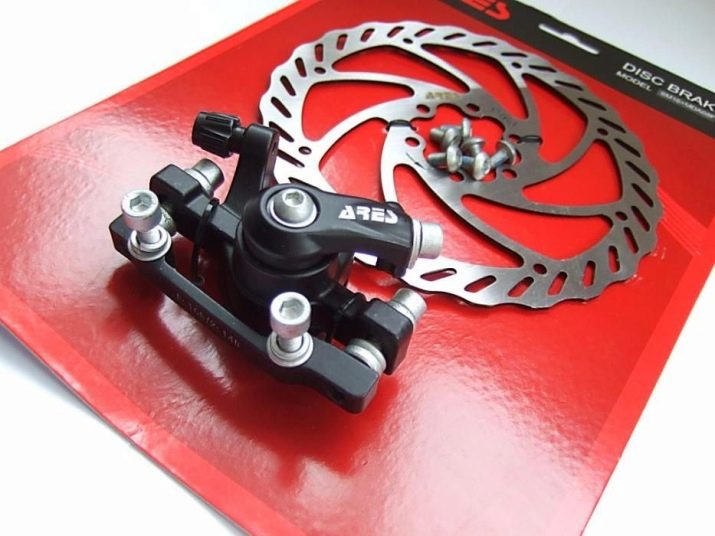
Recommendations for selection and use
How smoothly the bike will stop is determined by the pad filler. But it is much more important to consider the place of a particular brand in the overall ranking. The cheapest rotary mechanical brakes. Pay for products Shimano, Tektro, Aquila will have an average of 20-30 conventional units. The middle price group (up to $ 100) includes products of the same Shimano, as well as:
- Avid Elixir;
- Magura
- XLC;
- Hayes.


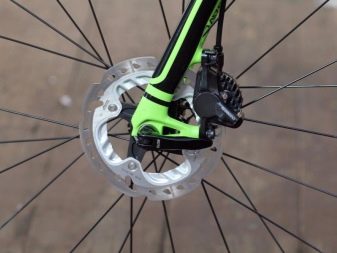
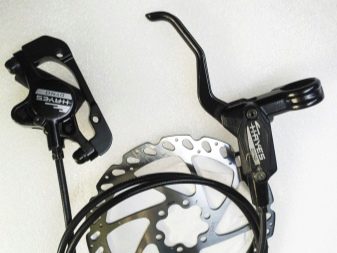
In the expensive segment, there are also products of already listed companies. But you will also have to pay from 100 to 500 USD for SRAM, Formula products. If we talk about specific models, deserves attention Shimano Deore. This modification is powerful and ergonomic at the same time. They note the high power and smoothness of the stop, as well as the presence of two types of pads in the delivery set.
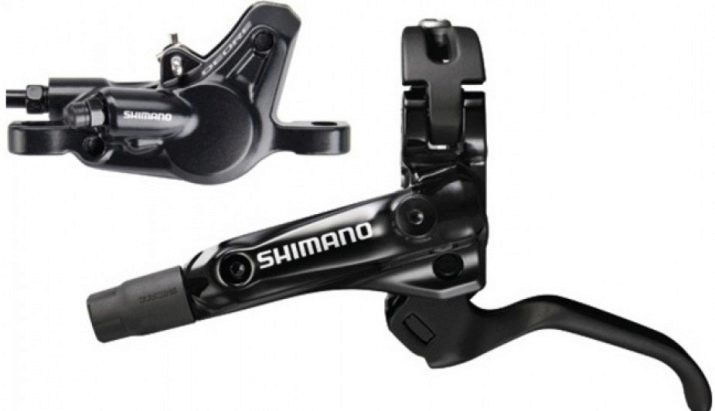
SRAM Guide R slightly inferior to the leader of the rating. With such components, you can safely go on the road along the most difficult terrain. The ride is quite high. It will be possible to adjust it without additional tools. The system is operational in almost all weather conditions.

Brake force one - Comfortable and lightweight German-made brakes. And not just light, but some of the lightest in its class. Handles are made of reliable fiberglass. The need for pumping is reduced to zero. This model allows you to demonstrate excellent results in a cycling marathon and in cross-country races.
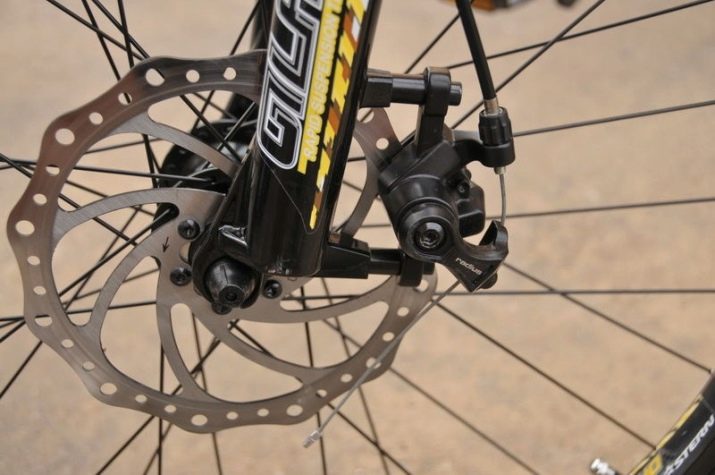
Mechanical disc brakes set as follows:
- turn the bike over;
- remove the wheel;
- remove the caliper and disk;
- take out the cable;
- release previously installed brakes;
- attach the rotor to the screws to the sleeve;
- put the brake handle;
- mount the lever and cable;
- they put the adapter on the frame, but not until the end, so that then they can be customized;
- attach the cable to the caliper;
- return the wheel to its place;
- make the final adjustment.
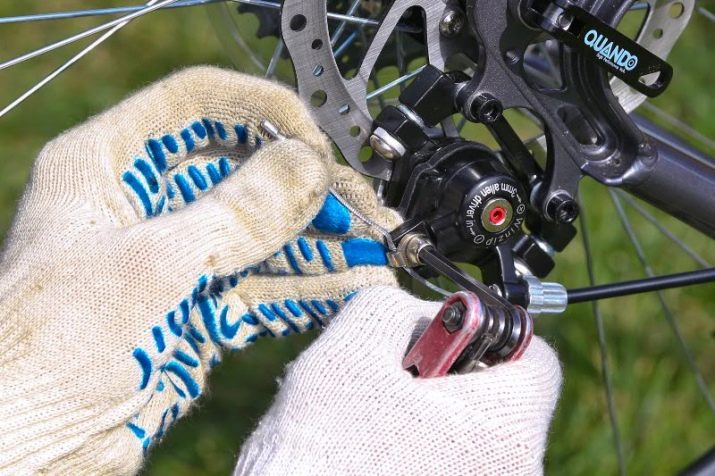
Work with hydraulics is built differently:
- after removing the wheel, a disk is put in place of the hub;
- a hydraulic line closes to the lever;
- the frame is supplemented with a caliper and adapter (also without tightening all the way);
- put the wheel back;
- put the rotor back;
- clamps straighten the hydraulic line;
- rigorously test it;
- Having achieved the correct installation of the caliper, all parts of the circuit are rigidly fixed.
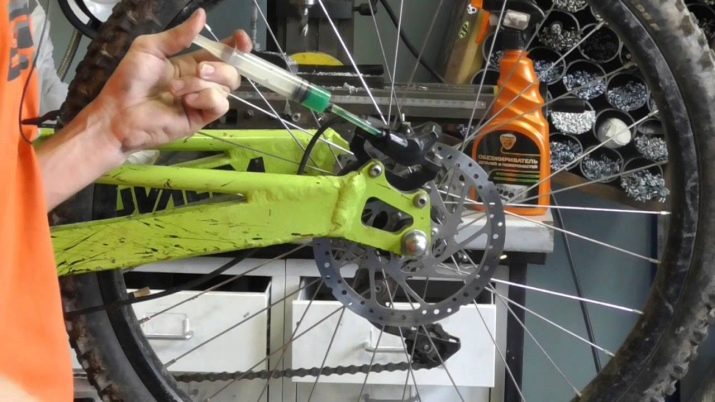
In the next video, you will learn how to properly configure disc brakes.
